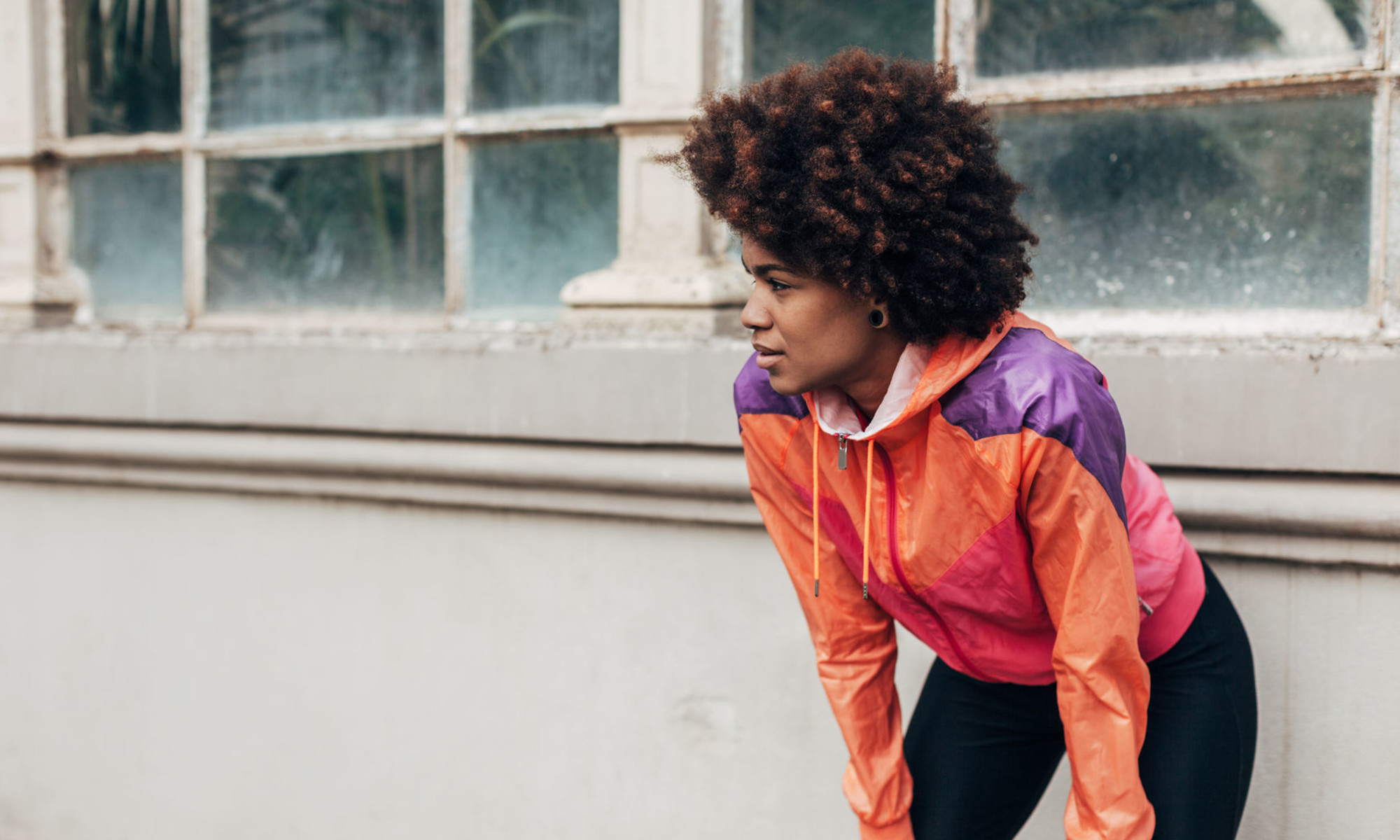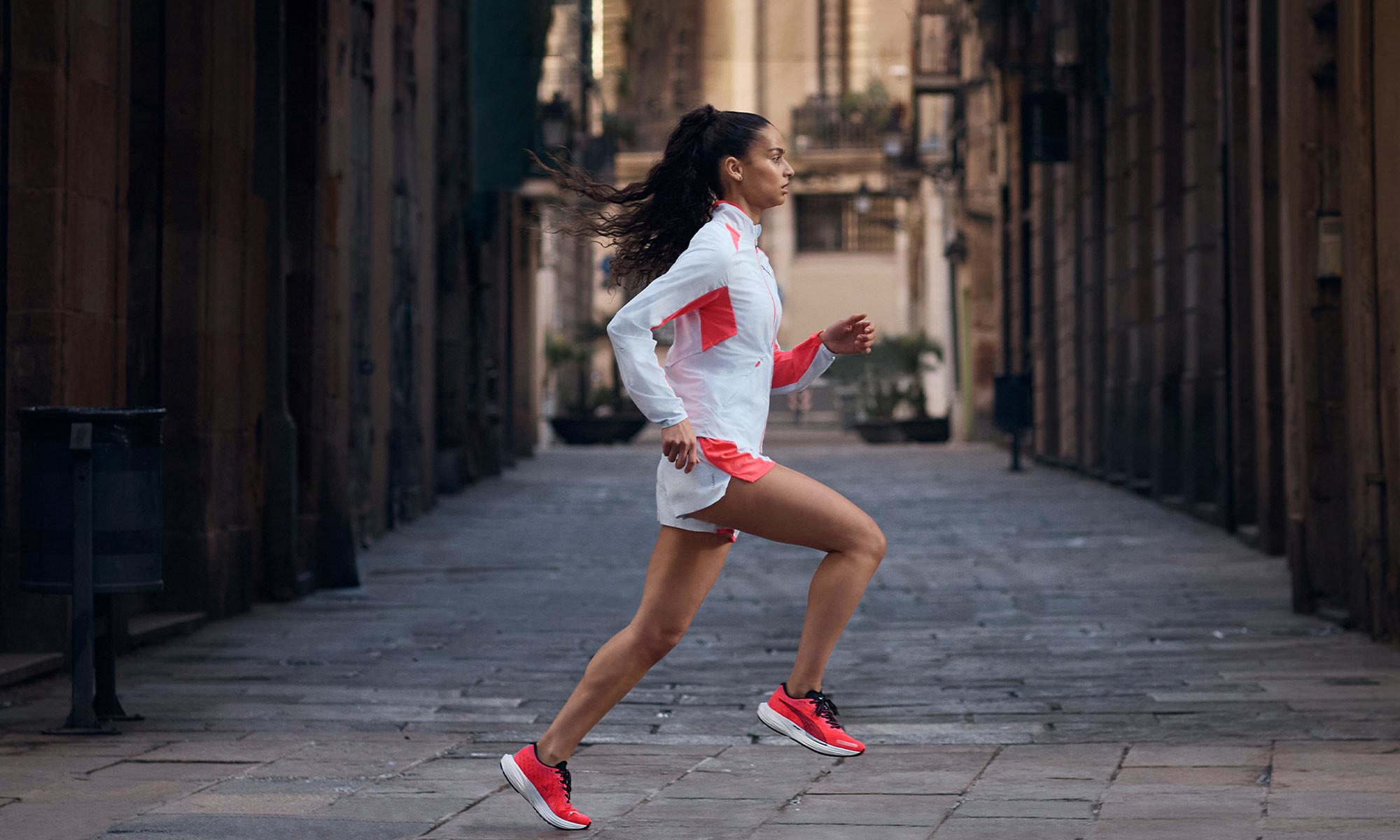People Swear This Type Of Exercise Gives You Wrinkles, So We Asked Top Derms
Here's how to prevent it.

Exercise is great for your skin: It promotes healthy blood circulation and delivers nutrients to skin cells (that’s why people often hail the “post-workout glow”), and it soothes your mind and promotes a positive mood—skin and mental health, as we know, are intimately connected.
However, people do occasionally voice some workout-related skin concerns, like clogged pores, flushing, or skin sagging. Speaking of that last gripe, we’ve seen a common theory floating around the Internet that running makes your face appear gaunt over time—a concept known as “runner’s face.” However, like many aspects of skin care, it’s not as simple as it seems. Allow derms to weigh in.
As you can probably guess, “runner’s face” is a term used to describe someone’s complexion after years of running. It’s not a medical diagnosis by any means, but some people say long-distance running takes a toll on the skin over time. Essentially, the theory is that every time you pound the pavement, your jowls bounce up and down, and this constant gravitational pull can lead to sagging skin down the line.
Does running really cause skin sagging?
You might hear the term “runner’s face” thrown around in everyday conversation, but what do the experts say? According to board-certified dermatologist Cynthia Bailey, M.D., founder of Dr. Bailey Skin Care, the science makes sense, as runners (namely, ultra-marathoners) generally have a lower percentage of overall body fat. “Much of your facial appearance is dependent on facial fat pads—collections of facial fat that create youthful facial structure,” she says. “With loss of facial fat, skin sags and age-related facial features, such as the marionette lines and the loss of rounded cheek volume, become more prominent.”
Everyone experiences gravitational wrinkles at some point (over time, your skin just sags!), but when you have less fat in your face to begin with, that process might happen a bit quicker. Board-certified dermatologist Joshua Zeichner, M.D., backs up the claim: “High-impact exercise takes a toll on the skin, because gravitational forces can be damaging to collagen and elastic fibers and contribute to sagging,” he tells mbg. “Moreover, as there is less fat in the face of runners, the faces tend to look more gaunt and older.”
Not to mention, many endurance athletes do their running outdoors, and all that sun exposure can contribute to aging skin, especially if they leave that vulnerable skin unprotected. Let’s not forget that up to 80% of the signs of skin aging—including thinning and loss of elasticity—are due to UV damage.
But let’s back up for just a moment: Exercise is also so good for your skin! “There's data showing that exercise can actually strengthen your mitochondria, which are your skin's powerhouses,” Zeichner notes. We never want to demonize any sort of movement, and we often say the best type of exercise is that one that you’ll do—period and end of story.
Plus, running is associated with a few skin-related benefits. “The regular training of endurance runners has been shown to reduce the presence of advanced elycation end products (AGEs) in skin by as much as 11% compared to untrained age matched individuals,” says Bailey. “Accumulation of AGEs in skin is associated with skin aging, loss of skin elasticity, and reduced skin biomechanical strength.”
So is runner’s face a real thing? Well, it is technically possible for your cheeks to hollow out from becoming so lean, but it’s usually only the case for ultra-marathoners or someone who might be exercising to the extreme. However, it shouldn’t be too much of a concern; and if running makes you feel your best (no matter how many miles you log), then that’s really all that matters.
How to prevent sagging skin.
To keep your complexion supple (whether you’re a runner or not), Bailey and Zeichner both emphasize sun protection. “If you are going to run, make sure to protect your skin daily with an antioxidant serum plus sunscreen before you exercise,” Zeichner suggests. Even if you tend to run at dawn or dusk, don’t skip this step. “Even early morning and late afternoon sun subjects a runner’s skin to intense UVA exposure known to cause collagen loss and wrinkles,” says Bailey. Also make sure to reapply throughout the day, especially for those working up a sweat.
“Including antioxidant-rich skin care products, such as green tea and vitamin C, are [shown] to slow skin oxidative damage due to free radicals that form from normal metabolic activities, as well as due to stress, poor diet, smoking, and sun exposure,” adds Bailey. Consider it a sign to add an antioxidant serum to your routine, if you haven’t already.
From there, you can fold in collagen-stimulating ingredients (like retinol) to keep the skin firm and strong; prevention is key when it comes to skin aging, but you can also head to the derm for an in-office treatment if the sagging does bother you.
At the end of the day, “runner’s face” shouldn’t scare you away from engaging in the exercise you love. There are some skin benefits associated with running, anway, plus plenty of ways to delay crepey skin for as long as possible (since it ultimately happens to all of us). Just remember to protect your skin from UV rays before you hit the pavement, and you should be set.

 UsenB
UsenB 































